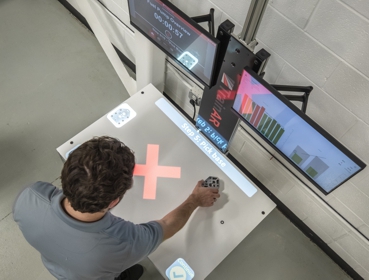
“The average cost HR managers say they incur for having extended job vacancies is more than $800,000 annually,” according to a CareerBuilder survey in 2017.
Since 2017, the unemployment rate has skyrocketed. The economic downturn in March caused profit loss for many businesses, even without the added cost of job vacancies.
While the economy has started to recover, businesses are increasingly struggling to fill job vacancies. The issue isn’t finding candidates to fill these new positions, it’s finding workers that meet the qualifications necessary to do these jobs effectively.
The skills gap is the disconnect between the skills a worker has and the skills required of a worker to perform their job. In modern manufacturing, the skills gap is generally attributed to either quickly losing many experienced workers or the introduction of new technologies into a worker’s environment.
The key to staying afloat during COVID is having an agile workforce that can adapt to rapidly changing work requirements and technologies. Unfortunately, the resources necessary to advance worker capabilities are limited. An increase in demand and major decreases in employment and retainment, in particular, have shed light on how the skills gap prevents employee effectiveness.
Causes of the Skills Gap
Increased Demand
Increased factory activity in the last few months has required more workers to adapt and learn new skills to meet production needs. The Institute for Supply Management stated in its index that national factory activity rose to a reading of 59.3 last month. That is the highest reading since November 2018.
Following many months of economic downturn, renewed consumerism is fueling production. New technologies have been brought in to boost throughput, but their efficiency relies on the supply chain keeping up with inventory needs. The reduced inventory during the height of COVID put a focus on retaining profit rather than stockpiling for economic revival, understandably.
One example of a business having issues with needed materials is Casper Sleep Inc., better known as just Casper. Mattress deliveries are being delayed because the company outsources many of its materials, which aren’t available at the same rate as orders.
The pressure to quickly move materials is leaving little time to train workers on more efficient processes or the technology intended to do that.
Decreased Employment
As of October 2020, the unemployment rate is 6.9%, equal to 11.1 million people unemployed, according to the Bureau of Labor Statistics. In total, manufacturers in the US employ 8.51% of the workforce (NAM). This leaves just under a million manufacturers currently unemployed.
The manufacturing industry has also seen record increases in retirement. During the third quarter of 2020, compared to 2019, 3.2 million more people between 56 and 74 years old retired according to the Pew Research Center. Last year, about 20.3% of all manufacturers were 55 to 64 years old according to the Bureau of Labor Statistics.
With a large percentage of the population out of work or retiring, businesses are moving new employees into open positions. But often, the workers brought in are from other departments, industries, or completely new to the workforce.
Often, this results in negative effects on the bottom line. Find out more about the effects of the skills gap in our article “3 Effects of the Skills Gap on the Bottom Line.”
The manufacturing industry needs to quickly adopt realistic solutions to the skills gap that solve both of these challenges.
To learn how LightGuide uses AR technology on their TrainAR workbench to solve the skills gap, please contact us for more information.

